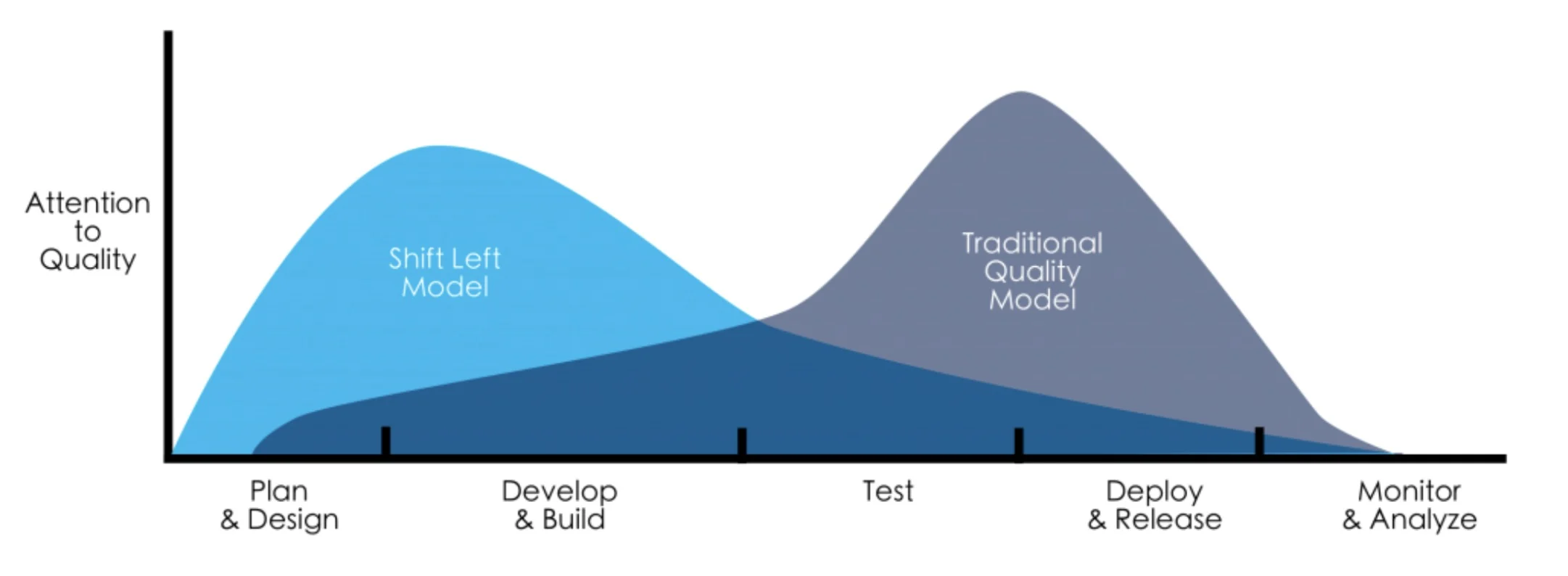The Importance of Shift-Left Testing for Quality Assurance

In the ever-changing field of software development, it's very important to deliver high-quality products within the requested time period. In the traditional testing methods, testing is done at the end of the development process, often causing expensive delays and missed defects. Shift-left testing addresses these issues by embedding testing into the early stages of development, including planning, design, and coding phases.
Shift-Left Testing is a new strategy that involves starting the testing process earlier in the software development lifecycle (SDLC). By doing this, not only does the quality of the product improve, but the time it takes to bring the product to the market is also reduced.

Shift-left testing offers a range of significant benefits that can greatly enhance the software development process and overall product quality. Here are some of the key advantages:
- Early Defect Detection and Resolution
- Reduced Rework
- Lower Correction Costs
- Improved Collaboration
- Increased Product Quality
- Faster Time-to-Market
- Enhanced Risk Management
- Improved Customer Satisfaction
- Increased Test Coverage

When moving to a shift-left testing approach, the team may face several challenges. Here are some of the key obstacles and solutions for those obstacles;
- Resistance to Change
Normally in any company team members, especially those who execute traditional testing methods, may resist the shift-left approach due to fear of change or a lack of understanding.
As a solution for this, companies can give awareness about that and can conduct workshops and training sessions to educate team members on the benefits and practices of shift-left testing and can gain support from leadership to drive the cultural shift and reinforce the importance of the new approach.
- Integration with Existing Processes
Integrating shift-left testing with existing development processes, tools, and workflows can be more complex. Because when we integrate normal flow will be changed and that can be affected to the team.
To eliminate these issues, teams can Map out existing processes and identify points where shift-left testing can be integrated seamlessly, and can choose tools and technologies that are compatible with their current systems and workflows.
- Collaboration Between Teams
The team must work closely together. It wouldn't be easy to accomplish if the team hadn't collaborated in this way before. There is a possibility of doing it systematically using the left shift procedure.
The following methods can be used for this. Creating cross-functional teams is one way to solve this. Other strategies include establishing regular communication channels such as standing meetings and retrospectives, sharing daily goals with the team, and using collaboration technologies to promote collaboration. Align team goals and objectives to make sure everyone is working toward the same goals.
- Difficulty in Writing Early Test Cases
Writing effective test cases early in the development process, especially when requirements are not fully defined.
So as a solution for this we can use BDD,TDD as described in the below;
- Behavior-Driven Development (BDD): Adopt BDD practices to write test cases in natural language using tools like Cucumber, SpecFlow, or JBehave.
- Test-Driven Development (TDD): Implement TDD to write tests before coding, ensuring that tests are an integral part of the development process.
- Collaborative Requirement Workshops: Conduct workshops with stakeholders to refine requirements and write initial test cases together.
The majority of businesses nowadays adopt agile methods, and they benefit greatly from them. However, shift-left testing can be successfully incorporated into agile teams' workflows to improve product quality and delivery time. Agile teams can reap the benefits of both processes by implementing techniques like continuous integration, TDD, BDD, and early tester engagement. Better teamwork, early error identification, and continuous improvement are the outcomes of this combination, which eventually produces software of greater quality and delivers it more rapidly.